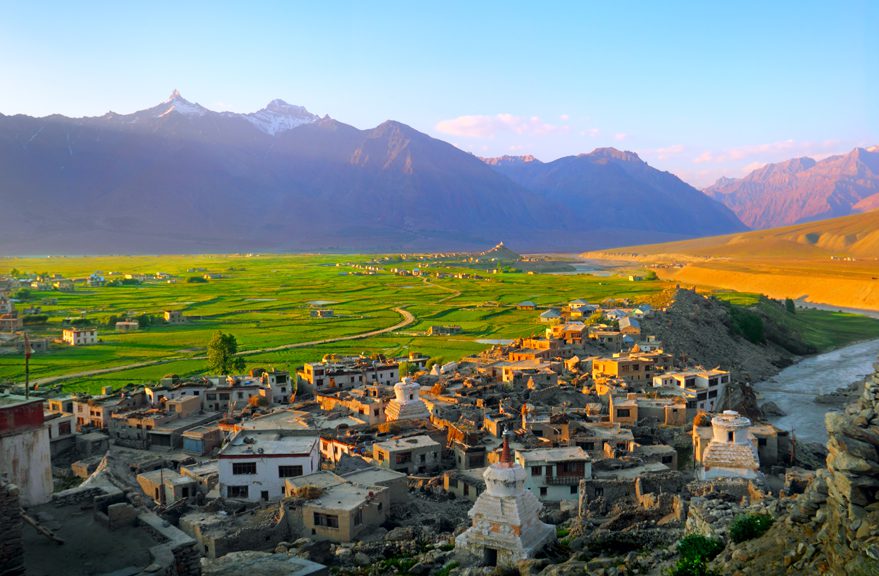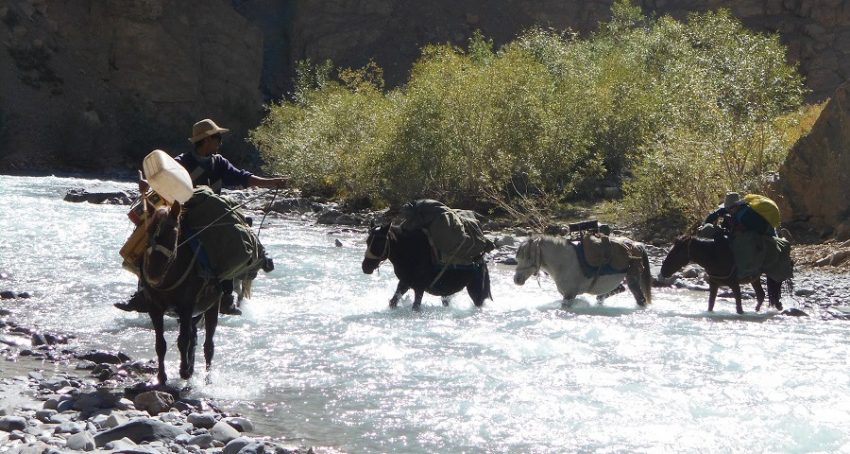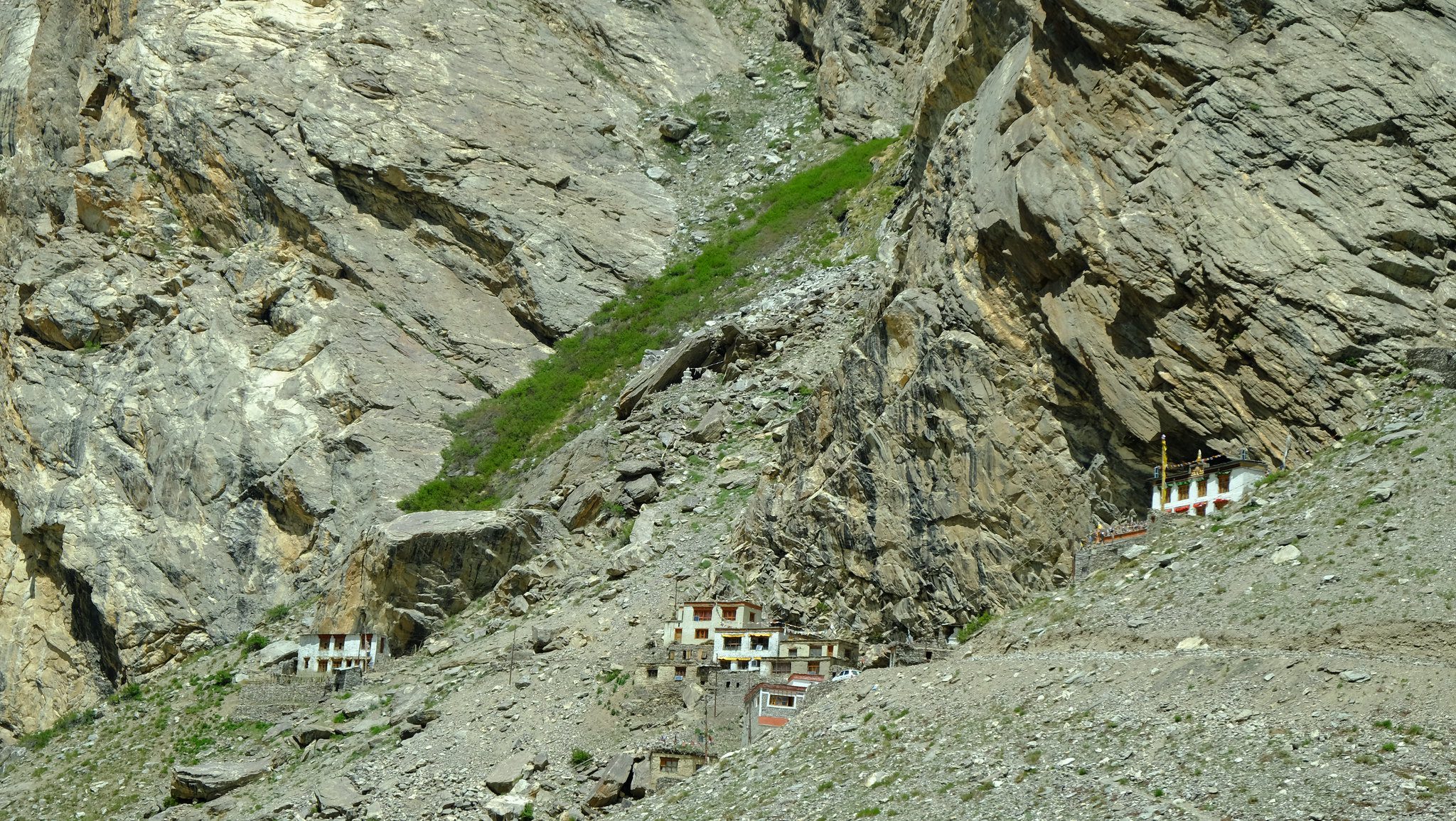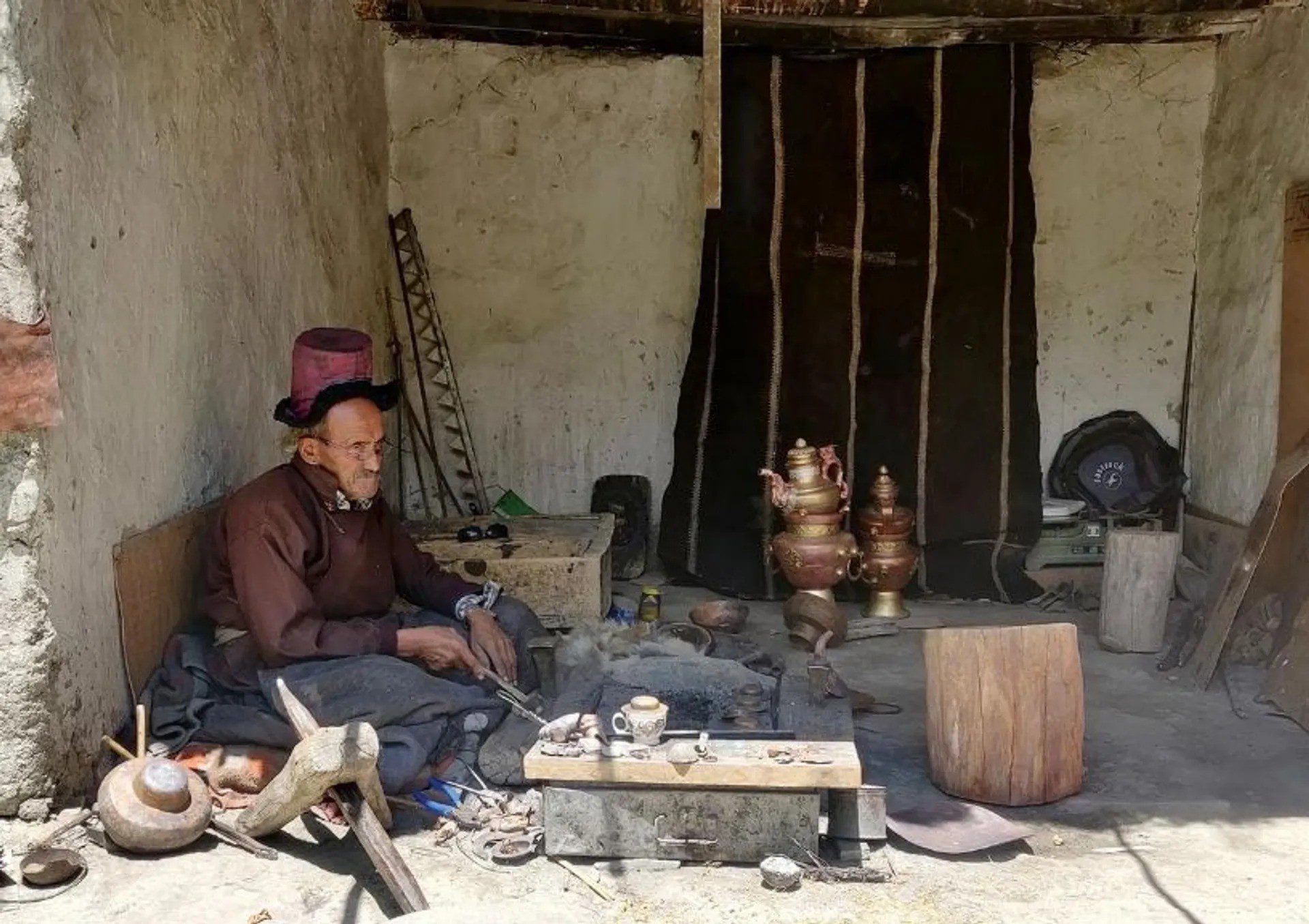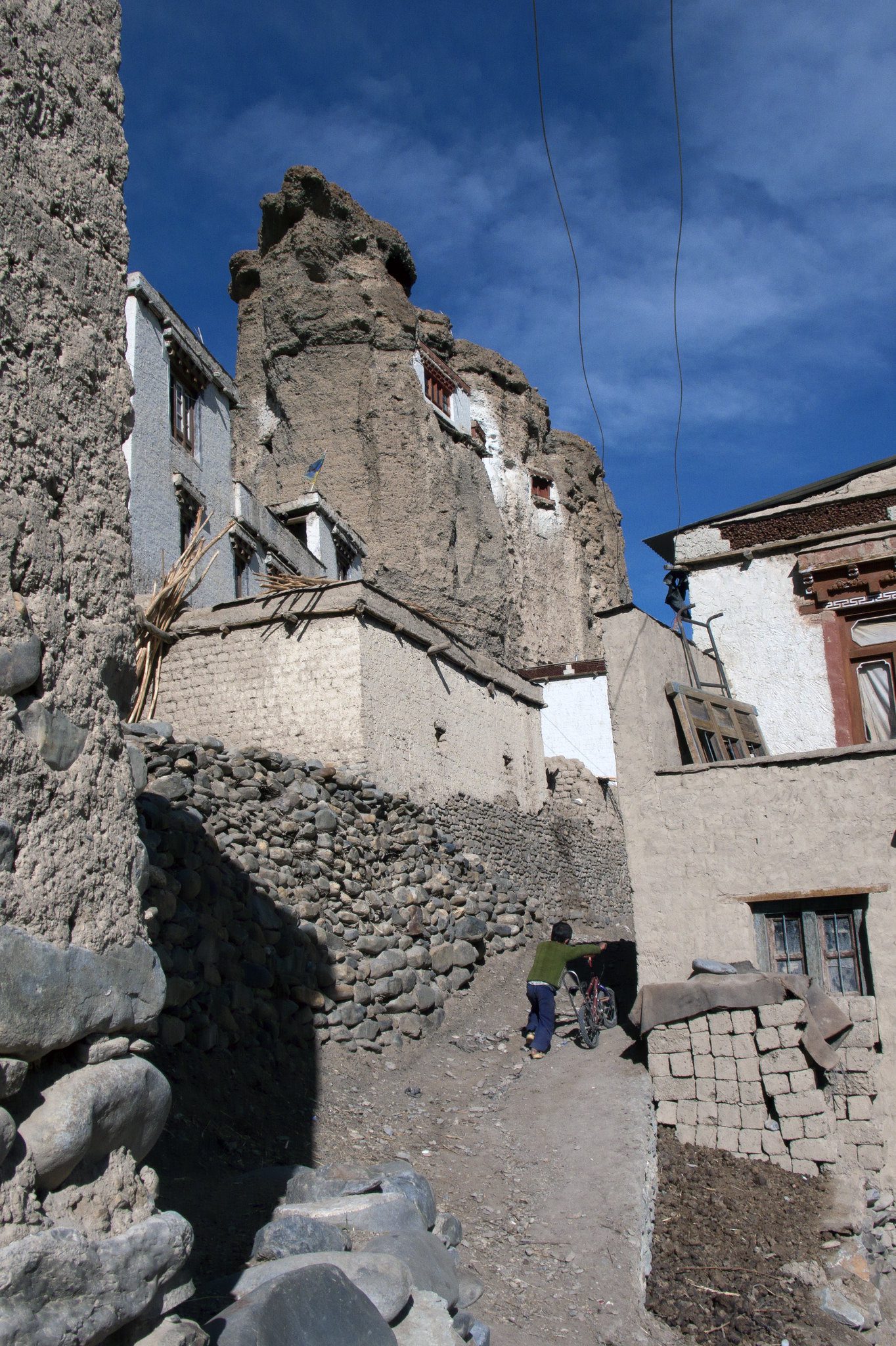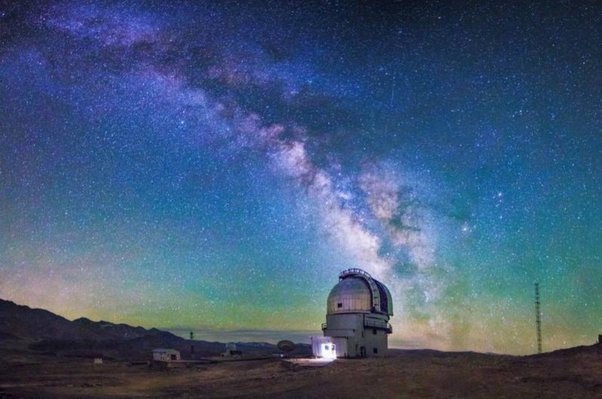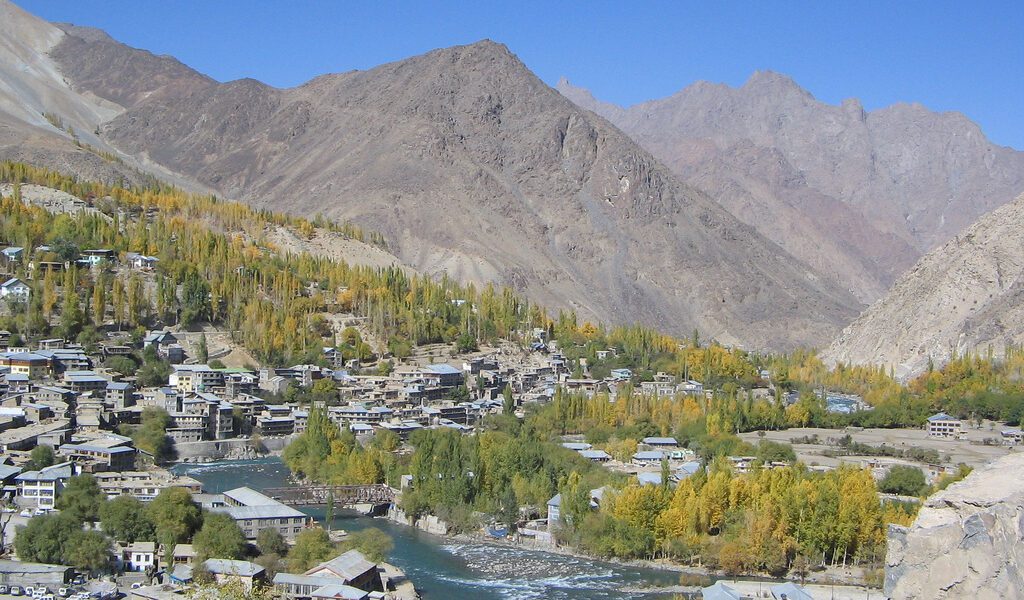Ladakh, often referred to as the “Land Beyond the Mountains,” is a land of breathtaking beauty and cultural depth. While iconic destinations like Pangong Tso, Nubra Valley, and Tso Moriri have captured global attention, there’s a hidden side of Ladakh waiting to be explored. This guide delves into the uncharted regions, untouched gems, and lesser-known adventures that will inspire the explorer in you.
An Overview of Ladakh – The Land Beyond the Mountains
The Geographic and Cultural Significance of Ladakh
Nestled in the Indian Himalayas, Ladakh is a high-altitude desert characterized by rugged mountains, deep valleys, and a unique cultural heritage. Historically, it served as a crossroads for ancient trade routes, blending Tibetan, Indian, and Central Asian influences. This distinct identity is reflected in its monasteries, festivals, and local customs.

Hidden Gems of Ladakh
1. Kanji Village – Ladakh’s Best-Kept Secret
Located far from the bustling crowds, Kanji Village is a serene retreat surrounded by towering peaks. This remote hamlet offers an authentic glimpse into Ladakhi life, untouched by modernization.

- Why Visit? Kanji is perfect for trekkers seeking solitude. The Kanji La trek offers spectacular views of the Zanskar range.
“Kanji was like stepping into a different world. The peace and simplicity here were life-changing.”
– Sophia Greene, Teacher, USA
2. Zongkul Monastery – A Hidden Spiritual Retreat
Perched on a cliff in the Zanskar Valley, Zongkul Monastery is a hidden gem for spiritual seekers. Known for its meditation caves used by Buddhist saints, the monastery is a tranquil escape.

- Why Visit? This monastery offers a serene environment for meditation, along with stunning murals and artifacts.
“The journey to Zongkul was challenging but so rewarding. It’s a place of profound peace.”
– Lars Eriksson, Photographer, Sweden
3. Chilling Village – The Hub of Traditional Metalwork
Famous for its metal artisans, Chilling is a tiny village where you can witness centuries-old craftsmanship. The artisans here create beautiful items using traditional techniques passed down generations.

- Why Visit? Explore local workshops and take home handcrafted souvenirs like teapots and prayer wheels.
“Chilling’s artisans are masters of their craft. Watching them work was mesmerizing.”
– Emma Jones, Engineer, Australia
Adventures Off the Beaten Path
4. The Hidden Trails of Lungnak Valley
Lungnak Valley, nestled deep in the Zanskar region, offers some of the most secluded trekking routes. With vibrant meadows and dramatic landscapes, it’s an adventurer’s paradise.

- Why Visit? The Phugtal Monastery, accessible only by foot, is the crown jewel of this region.
“Trekking in Lungnak Valley tested my limits but rewarded me with memories of a lifetime.”
– David Miller, Software Developer, Canada
5. Kargil’s Wakha Region – A Gateway to Forgotten Trails
While Kargil is often seen as a transit point, the Wakha region nearby holds secrets worth discovering. The Wakha Monastery, set amidst picturesque landscapes, is a lesser-known gem.

- Why Visit? Ideal for cultural exploration and short treks.
“Wakha offered a mix of adventure and history that I didn’t expect.”
– Claire Adams, Travel Blogger, UK
Cultural and Historical Treasures
6. Mangyu Monastery – The Oldest Murals in Ladakh
Mangyu is a lesser-known village that houses an ancient monastery with some of Ladakh’s oldest murals. Its artistry and spiritual significance make it a must-visit for history enthusiasts.

- Why Visit? A treasure trove of ancient Buddhist art and architecture.
“Mangyu’s murals transported me back in time. It’s an artist’s dream.”
– Oliver Brown, Historian, New Zealand
7. Garkone Village – A Glimpse into Brokpa Heritage
Located near the Indus River, Garkone is one of the Brokpa villages where an ancient Aryan tribe resides. The community’s distinct customs and floral headgear are intriguing cultural elements.

- Why Visit? Experience unique traditions, and explore vibrant gardens and festivals.
“Meeting the Brokpa people in Garkone was the highlight of my trip to Ladakh.”
– Ananya Desai, Artist, India
Wildlife and Nature
8. Hanle – A Haven for Stargazers
While Hanle is gaining fame, it remains a peaceful spot for astronomers and wildlife enthusiasts. The Hanle Observatory offers an unmatched view of the stars, and the nearby marshlands are home to rare bird species.

- Why Visit? Ideal for astronomy and birdwatching.
“I saw galaxies I didn’t know existed. Hanle was magical.”
– William Harris, Astronomer, South Africa
Tips for Exploring Ladakh’s Secrets
Health Tips for High-Altitude Travel
- Acclimatize for at least two days upon arrival.
- Stay hydrated and avoid alcohol.
- Carry medication for altitude sickness.
Packing Essentials for Ladakh
- Lightweight, warm layers.
- Comfortable trekking boots.
- Power banks and solar chargers.
Q&A: Common Questions About Ladakh
Q1: What is the best time to visit Ladakh?
Answer: The best time to visit Ladakh is between May and September, when the weather is clear, and roads are accessible.
Q2: How can I avoid altitude sickness in Ladakh?
Answer: To avoid altitude sickness, spend the first two days acclimatizing, drink plenty of water, and avoid strenuous activity.
Q3: Are there any remote trekking options in Ladakh?
Answer: Yes, remote treks like the Kanji La Trek and Lungnak Valley offer solitude and stunning landscapes.
Q4: Is Ladakh suitable for solo travelers?
Answer: Absolutely! Ladakh is safe for solo travelers, but proper planning is necessary due to its remote nature.
Q5: Can I visit Ladakh year-round?
Answer: While Ladakh is accessible year-round, winters are harsh. Most visitors prefer the summer months.
Q6: What are some eco-friendly practices for Ladakh travel?
Answer: Carry reusable water bottles, avoid single-use plastics, and support local businesses for sustainable tourism.
Ladakh Uncharted
Ladakh Uncharted | The journey through Ladakh mirrors the very essence of unraveling unknown horizons, as its dramatic landscapes and unique cultural identity awaken the deepest sense of wonder and exploration. Ladakh Uncharted delves into this realm where inner peace intertwines with the wild, untouched beauty of Ladakh. From the snow-capped peaks to the serene monasteries, every step in Ladakh is a step toward self-discovery. The mountains, ancient paths, and unspoken mysteries stretch before travelers, offering a meditative experience where each encounter feels both effortless and transformative. Whether it’s trekking across remote valleys or sitting quietly beside a sacred lake, Ladakh invites those who seek a deeper connection to the natural and spiritual world.

Ladakh Uncharted
The monasteries of Ladakh stand as living monuments to the region’s profound spiritual heritage. With origins dating back over a thousand years, these ancient structures are both places of worship and repositories of art, culture, and wisdom. Hemis Monastery, one of the largest in Ladakh, is renowned for its annual festival, featuring colorful mask dances performed by monks. The history of these monasteries reflects Ladakh’s role as a crossroads between India, Tibet, and Central Asia, where religious and cultural influences have intertwined over the centuries.
The Tibetan Buddhist influence is especially evident in the architecture and daily life of the monks. Prayer wheels, intricate murals, and the soft hum of chants fill the air as visitors explore the monastery grounds. Each monastery, from the remote Lamayuru to the awe-inspiring Thiksey, offers a window into the spiritual heart of Ladakh. These centers of meditation, learning, and community life continue to thrive, preserving traditions that have shaped Ladakh for generations.
Why Visit Ladakh for Ladakh Uncharted?
Ladakh is a destination that transcends mere travel. It offers a journey that touches both the outer and inner landscapes, making it a perfect setting for those who seek to unravel their own unknown horizons. The region’s breathtaking scenery—from towering mountain ranges to hidden valleys—provides not just an escape but a space for contemplation and growth. Ladakh’s culture, deeply rooted in Buddhist practices, invites visitors to reflect on their own lives and the world around them.
Ladakh’s people, known for their warmth and hospitality, add to the richness of the experience. Villages like Sumda Chun and the legendary Nubra Valley introduce travelers to a way of life that is intricately connected to nature and spirituality. Staying in local homestays allows for immersive experiences where one can learn about traditional Ladakhi customs, share meals made from local produce, and participate in community rituals.

Beyond its natural beauty, Ladakh offers a unique opportunity to explore oneself. The vastness of the region’s plateaus and the clarity of its skies seem to mirror the vastness of the human spirit. Whether it’s standing atop a mountain pass at 18,000 feet or meditating in a centuries-old monastery, Ladakh helps unravel the unknown horizons within each traveler.
Finding the Best Ladakh Uncharted in Ladakh
Finding the best places in Ladakh to experience “Ladakh Uncharted” involves venturing off the beaten path. Ladakh’s lesser-known treks, such as those leading to secluded monasteries or high-altitude lakes, offer unparalleled opportunities for solitude and reflection. The Markha Valley trek, for instance, takes travelers through verdant valleys, ancient villages, and high-altitude passes, allowing for both physical and spiritual exploration.
Ladakh’s iconic lakes, including Pangong Tso and Tso Moriri, are ideal spots for quiet contemplation. Their still waters reflect the sky, creating a mesmerizing landscape that feels timeless and infinite. Sitting beside these lakes, especially at dawn or dusk, brings an overwhelming sense of peace and connection with nature.

For those interested in Ladakh’s spiritual heritage, exploring monasteries such as Alchi, Phyang, or Diskit can be a transformative experience. These sites are not just places of worship but also centers of art, philosophy, and wisdom. Visiting these monasteries, with their ancient murals and intricate statues, offers insight into Ladakh’s rich cultural tapestry.
Ladakh’s Atmosphere and Ladakh Uncharted
Ladakh’s atmosphere is unlike any other place on Earth. The stark contrasts between the rugged mountains and the serene, tranquil monasteries create an environment that feels both raw and sacred. The traditional decor in Ladakhi homes and religious sites reflects this balance, with mud-brick houses adorned with prayer flags and colorful thangkas (Buddhist paintings) that add warmth and spiritual meaning to the space.

The interiors of Ladakhi homes, often simple and functional, are filled with symbols of devotion. Small shrines dedicated to Buddhist deities are common, and the air is often fragrant with incense. The use of earthy materials, like stone and wood, along with brightly colored textiles, creates an inviting and peaceful space, perfect for relaxation and reflection.
Traditional Ladakh Uncharted
Traditional Ladakh Uncharted is an integral part of the region’s identity, offering a unique blend of flavors that reflect its harsh climate and remote location. Hearty, warming dishes such as thukpa (noodle soup) and momos (dumplings) provide the sustenance needed to endure Ladakh’s cold temperatures. Skyu, a thick stew made with root vegetables and barley, is another staple of the Ladakhi diet, designed to nourish both body and spirit.

Drinks like butter tea, made with yak butter and salt, are a must-try for anyone visiting Ladakh. This rich, savory drink is not only warming but also hydrating, making it essential for those venturing into the high-altitude regions of Ladakh. Chang, a local barley beer, is often enjoyed during festivals and community gatherings, adding a sense of joy and camaraderie to any occasion.
Live Cultural Ladakh Uncharted in Ladakh
Ladakh is home to a vibrant cultural scene, with festivals and live performances held throughout the year. The Hemis Festival, which celebrates the birth of Guru Padmasambhava, is one of the largest and most famous events in the region. Monks dressed in elaborate costumes perform cham dances, which depict the triumph of good over evil. The energy of the festival, with its bright colors, rhythmic music, and elaborate rituals, draws visitors from around the world.
Other local festivals, such as the Losar (New Year) and Ladakh Festival, provide visitors with the chance to witness traditional dance, music, and crafts that have been passed down through generations. These events are more than just entertainment; they are a celebration of Ladakh’s rich cultural heritage and its deep connection to the spiritual world.
Trekking and Outdoor Activities Ladakh Uncharted
Ladakh is a trekker’s paradise, offering some of the most stunning and challenging routes in the world. From the famous Ladakh Uncharted, which follows the frozen Zanskar River, to lesser-known routes like the Sham Valley or Nubra Valley treks, Ladakh’s landscape offers endless possibilities for adventure and discovery. The high-altitude passes, such as Khardung La and Chang La, offer breathtaking views of snow-capped peaks and sprawling valleys.

Wildlife enthusiasts will also find Ladakh Uncharted to be a haven for rare species such as the snow leopard, Himalayan blue sheep, and the Tibetan wild ass. Winter expeditions to spot the elusive snow leopard in the Hemis National Park are gaining popularity among wildlife photographers and conservationists alike.
The Importance of Preserving Ladakh’s Ladakh Uncharted
Ladakh’s rich cultural and environmental Ladakh Uncharted is under increasing threat from climate change and mass tourism. Preserving this unique region requires careful attention to sustainable tourism practices. Choosing eco-friendly accommodations, supporting local businesses, and participating in community-led conservation efforts are just a few ways that visitors can contribute to the preservation of Ladakh’s natural and cultural heritage.
Ladakh’s people have a long history of living in harmony with their environment, practicing sustainable agriculture, and maintaining a deep spiritual connection to the land. Visitors are encouraged to follow the same principles, leaving no trace and respecting the fragile ecosystems that make Ladakh so special.
Etiquette and Tips for Visiting Ladakh Uncharted
Before visiting Ladakh, it’s essential to understand and respect the region’s customs and traditions. As a deeply spiritual place, Ladakh requires visitors to dress modestly, especially when visiting monasteries or attending religious ceremonies. Always ask for permission before taking photographs inside monasteries or of local people.
Medical Ladakh Uncharted
Spa trail Ladakh Uncharted
Ladakh Uncharted

When Ladakh Uncharted, remember to stay on designated paths to avoid damaging fragile ecosystems. Tipping is appreciated but not expected in most settings, and it’s important to carry cash, as many remote areas do not accept credit cards. Lastly, be mindful of altitude sickness and take the necessary precautions when traveling to higher elevations.
Conclusion: Enjoying Ladakh Uncharted in Ladakh
Ladakh is a place where the physical and spiritual worlds converge, offering travelers a journey unlike any other. Whether you’re trekking across high-altitude deserts, exploring ancient monasteries, or simply sitting in quiet reflection by a mountain lake, Ladakh invites you to unravel your own unknown horizons. By respecting the region’s traditions and practicing sustainable tourism, you help ensure that Ladakh’s beauty and cultural richness will be preserved for future generations to explore and enjoy.
